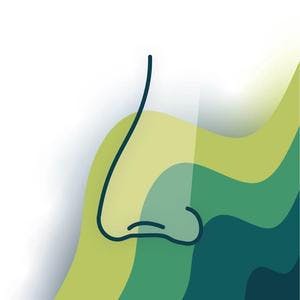Introduction
Eczema is a rash-like skin condition. It affects a lot of children and young adults and can have a very big impact on a person’s quality of life. It can be very itchy and this can affect one’s learning, sleep and behaviour. It can also sometimes cause infection. There are many forms of eczema, but for the purpose of this booklet, we will discuss “Atopic Dermatitis”.
What is Eczema?
It is important to understand what eczema actually is, because then the treatment makes a lot more sense. In healthy skin, there is a nice barrier of skin cells that produce a type of protective oil. One can compare this to a brick wall, where the bricks are the cells and the cement is this oil. This oil or cement helps keep the skin a bit moist and prevents it from losing water and having cracks in it.
In eczema, this cement is missing and so the skin becomes dry and cracked, which allows irritants to get in the skin. One way to prove this is that we know that people with eczema don’t have eczema over their nose, because the nose has extra oil glands that help keep the skin barrier secure.
The cause for the lack of this cement or oil in the skin is quite complex, but we know that it can be associated with allergies and asthma too.
It is important to know that “eczema is not a rash that itches, but rather an itch that rashes”. What this says is that eczema exists before the rash that one sees forms, and it persists when it is gone too.
People with eczema basically start with dry skin that is itchy but looks normal and then only does it progress to the rash one often sees, because dryness and cracks in the skin let irritants in, causing the rash.
Treatment
There are many components to the treatment that will be listed below.
Daily hygiene changes
Those with eczema should follow the following advice on daily skin hygiene
- Avoid things that you are allergic to (allergic triggers)
- When washing, do not use soap. Rather cover the skin in aqueous cream and then wash it off. Soaps make your skin dry and therefore can make eczema worse.
- Avoid things that could irritate your skin, such as itchy clothing, sharp fingernails and dressing too warmly.
Emollient cream
This is one of the most important parts of treating eczema. An emollient cream is a cream that contains some oil in it. Your doctor can tell you which one is best suited for you or your child. By using this cream, you replace the oil that your skin is missing, which helps prevent and treat eczema rashes. It is very important to remember to continue using this cream, even if there is no rash. If one stops using the cream, the rash will probably come back. Importantly, the cream must not have any fragrant, colouring or preservatives in it.
Wet wraps
Sometimes eczema can make the skin feel very hot and itchy. To help with this, you can put wet wraps over the affected skin. To wet wrap skin, follow these steps:
- Put on the cream you are currently using (emollient or steroid cream)
- Wrap a wet cloth or piece of clothing (dip it in warm water and wring the water out) around the affected area
- Wrap another dry piece of cloth or clothing around the wet cloth/clothing and secure it so that it doesn’t fall off easily
This helps cool the affected area down and helps stop the itching. It is very helpful!
Steroid cream
Your doctor might want you to use a steroid cream if there is an eczema rash. When using this cream, it is important not to use too much, or too little. The doctor will explain to you how much is needed. This cream is only used when there is a rash. When you put steroid cream on the rash, wipe it on in the direction that the hair on the skin is pointing, and not against it. Steroid creams reduce the inflammation in the skin, but it is not good to use it after the rash has gone.


